The Wages of History
The bitter legacy of the Enemy Property Act is set to make Saif Ali Khan Pataudi poorer by a few crores
 PR Ramesh
PR Ramesh
 PR Ramesh
PR Ramesh
 Siddharth Singh
|
18 Jul, 2025
Siddharth Singh
|
18 Jul, 2025
/wp-content/uploads/2025/07/WagesofHistory1.jpg)
An aerial view of the Flagstaff House, Bhopal (Photo: Sanjeev Gupta)
SAJID ALI KHAN or SaifAliKhan, Bollywood actor, inherited the title “Nawab of Pataudi” after the death of his father, the cricketer Mansoor Ali Khan “Tiger” Pataudi. He was also, technically, the Nawab of Bhopal, thanks to his lineage. Nawabs traditionally own a large number of palaces, huge tracts of property, jewellery, heirlooms, cars, and so on. However, the family’s indulgences forced its members to lease out the Pataudi Palace in Haryana to Neemrana Hotels, and Saif had to shell out a large sum to retrieve it from the hoteliers a decade ago.
All that, though, may be a flimsy blade of grass compared to what Khan and his family faced last month. The Madhya Pradesh High Court dismissed a quarter-century-old trial court verdict holding Saif and his family as owners of a large number of properties of the erstwhile royal family of Bhopal. These were inherited from Saif’s paternal grandmother Sajida Sultan that allegedly runs into an estimated ₹15,000 crore. This is apart from the family being embroiled in an enemy property case. This case dates to February 24, 2015, when the Custodian of Enemy Property, under the Enemy Property Act, 1968, held that all immoveable and moveable properties that belonged to the last Nawab of Bhopal, Hamidullah Khan, were “enemy property”. On January 8, Saif Ali Khan and his family—descendants of the last Nawab of Bhopal— had filed an appeal in this case before the joint secretary, Ministry of Home Affairs (MHA), the designated appellate authority under The Enemy Property (Amendment and Validation) Act, 2017.
The properties included in the Madhya Pradesh High Court ruling are the Flagstaff House, Saif’s childhood home, the Noor- Us-Sabah Palace, Dar-Us-Salam, Ahmedabad Palace, and Kohefiza property, among others. The Flagstaff House alone is estimated at a super high value of Rs 1,000 crore. Other ancestral assets include 5,796 acres of prime land in Bhopal and 1,370 acres of land outside of Bhopal. Revenue records from 1955 reveal that 5,739 acres of land—including the 830-acre Firdaus Farms, 3,087-acre Chiklod Retreat, 36-acre Rizwan Farms, shooting ranges and permanent shooting grounds—along with 1,370 acres of land in 13 other villages outside of Bhopal, are registered by the Bhopal administration as private property of the Nawab.
In 2015, the Custodian of Enemy Property Department declared the Bhopal Nawab’s properties as government property. Saif’s mother, Sharmila Tagore (aka Ayesha Begum), challenged the move by the government to acquire these properties, which the government labelled as “Enemy Property” under the Enemy Property Act of 1968. The Pataudi family contested this in court in 2015, and they got a temporary stay at the time, which was removed by the court in December 2024. Legal proceedings have continued since then. Under the Enemy Property Act, the Indian government is authorised to acquire the properties of those who migrated to ‘enemy’ countries, such as Pakistan after Partition, or China after the 1961 war.

Muddying the waters further for Saif’s family, an appeal was also filed in 1999 by other descendants of the Bhopal royal family related to Saif, who maintained that under Muslim Personal Law, the properties should be divided among all the legal heirs. The appellants included Begum Suraiya Rashid, granddaughter of Nawab Hamidullah Ali Khan’s elder brother Obaidullah and Rabia Sultan, sister of Sajida Sultan. They also challenged the validity of the January 12, 1962 government order that recognised Sajida Sultan as the rightful successor to the Nawab of Bhopal. But a Bhopal trial court dismissed partition suits filed by this branch of the family that had contested the exclusive ownership claimed by Sharmila Tagore and her children over these properties. The trial court had ruled that Tagore, Saif himself and his sisters, Saba and Soha Ali Khan, were the rightful heirs to the property. However, the high court has now overturned that ruling and, with its latest directive, ordered that the case be revisited in full (including the case for partition and division of property among all heirs) and settled within a year.
Some legal experts familiar with the Pataudi case maintain that even if the trial court succeeds in settling the vexed issue within a year as directed by the high court, Saif could probably get only around 2-3 per cent of the total value of the disputed assets. This is likely to trigger another legal bout in the case over the assets amassed by the erstwhile Nawab.
But how did Saif’s ancestral properties come under the threat of being declared “enemy property” and taken over by the government of India? Saif came into the picture as a direct descendant of Sajida Sultan, the younger daughter Hamidullah Khan, who was recognised as the successor to the Nawab upon his death in 1960. In the normal course, her elder sister, Abida Sultan, would have inherited the property and the title of Nawab. But she migrated to Pakistan in 1950, and the estate was then inherited by Sajida Sultan, her sister, who remained in India. Sajida Sultan became the legal heir to the properties under Article 366(22) of the Constitution. She was also declared Nawab after her father died in 1960 and recognised as such through a government order in 1962 from an obliging Jawaharlal Nehru government. Sajida Sultan married Saif Ali Khan’s grandfather Iftikhar Ali Khan Pataudi, to become his paternal grandmother. She passed away in 1995.

Complicating smooth transfer of the assets of the Nawab of Bhopal to his grandson Saif Ali Khan and placing it under the dire threat of being categorised as Enemy Property is why Abida Sultan, the Nawab’s firstborn, abdicated her claims and migrated to Pakistan
IN 2015, a whole 15 years later, the Enemy Property Custodian Office declared the Nawab’s ancestral property as belonging to the government, although the court later recognised in 2019 that Sajida Sultan was the legal successor of the property. But in its recent judgment, the Madhya Pradesh High Court maintained that the Bhopal Throne Succession Act, 1947, cited by the plaintiffs, had already been struck down by the Supreme Court (2020) and should not have influenced the previous ruling of the trial court in favour of the Pataudi family without considering all factors. In its 2000 order, the district court had relied on a now-overruled precedent set by the Talat Fatima Hasan case, also known as the State of Rampur case. Rampur was the first princely state to accede to India under Nawab Raza Ali in 1949. The case involved a five-decade-long dispute over the inheritance of the Nawab of Rampur’s properties, worth Rs 2,650 crore. It ultimately resulted in the property being divided among all legal heirs, including women, in accordance with Sharia law.
But the grounds for the trial court order in the Bhopal royal property dispute became null and void, as the State of Rampur precedent was struck down by the Supreme Court. Complicating smooth transfer of ancestral assets of the Nawab of Bhopal to his grandson Saif Ali Khan and placing it directly under the dire threat of being categorised as Enemy Property is the fact that Abida Sultan, the Nawab’s firstborn and heir by the presumption of primogeniture, and in the absence of any brothers, had abdicated her claims and migrated to Pakistan.
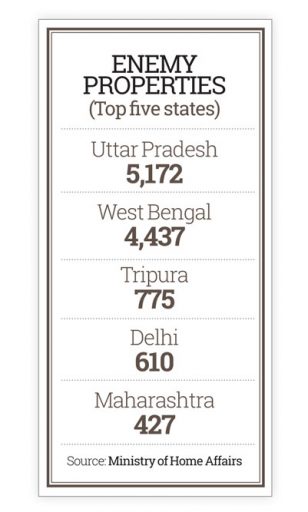
There is, though, a far more sinister backstory and plot to this bitter battle over the Bhopal Nawab’s ancestral properties. Nawab Hamidullah Khan was very privileged, the first male Nawab of Bhopal in generations who was enthroned after his grandmother stepped down in his favour. Sarkar Amma, as she was reverentially known, travelled to Buckingham Palace to clinch this. (Bhopal was a Salute State, a princely state under British overview). Hamidullah Khan had served as the chief secretary in her government. He was well educated and highly decorated with both civilian and military honours. But his style of governance was in stark contrast to hers, and he crammed his government with friends from his Anglo-Oriental College (today’s Aligarh Muslim University) days from across India, earning ire from his citizens.
He introduced polo, hockey, golf, hunting and other elite sports and threw lavish shikar parties in his estates, which women socialites attended. He donated land for the Bombay Cricket Club. He also owned massive amounts of property and Bentleys and Rolls-Royce’s through the wealth accumulated for generations off the predominantly Hindu citizenry, around 80 per cent, of his principality. His second marriage (involving a secret nikaah) was with one of these socialites, Aftab Jahan, a school friend of his eldest daughter Abida Sultan, and after the marriage went public, Hamidullah Khan and Aftab Jahan were in confrontation with sahibzadi Maimoona Begum, the first wife and Saif Ali Khan’s great grandmother, mother to Sajida Sultan who married Iftikhar Ali Khan Pataudi later and was recognised as the legal successor to the Nawab, through a government order, after his 1960 death.
But his playboy image was only part of the story.
Hamidullah’s closest political friend at the turbulent times leading up to Partition was Muhammad Ali Jinnah. Among officials at the highest echelons of the British India Empire, his friends included Lord Louis Mountbatten. Both friendships were aimed at securing what he probably envisioned as a smooth
transition to greener pastures for his immediate family and his untold personal wealth during the time of Partition. He was a self-confessed enabler of Jinnah’s Muslim League and longed for the creation of a “Riyasat-e-Madina”, or State of Madina, as with other elite Muslim heads of principalities.
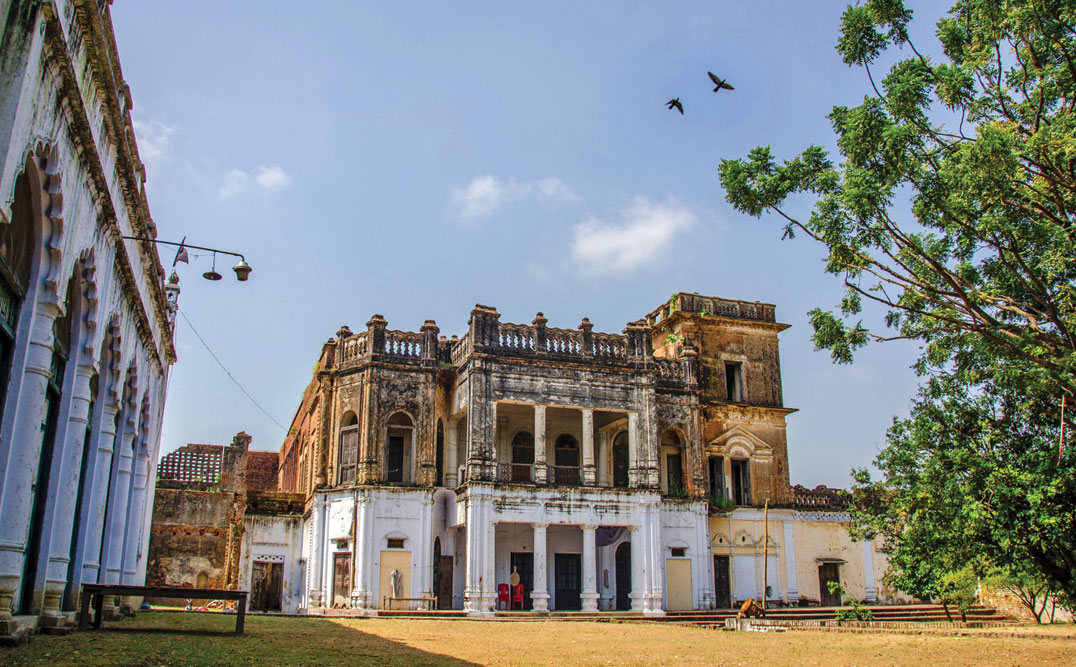
Mass migrations followed from both sides of the Radcliffe Line and led to millions being uprooted from their homes. This did not spare even elite Muslim families. ‘Disappointed’ by what the Partition turned out to be, the Raja of Mahmudabad chose not to live in Pakistan
There was a problem, though. The principality of Bhopal was landlocked at the centre of what would be India and Jinnah had conveniently left vague the nitty-gritty of how exactly such principalities would join Pakistan, even while robustly egging all Muslim rulers of such states to sow the seeds of communal discord and nurture visions of joining Pakistan, maximising his stature among Muslims and his leverage with the British. What was worse for Hamidullah, demographically too, was that Bhopal was predominantly Hindu and there was little, if any, possibility of the majority of citizens backing Hamidullah Khan’s position or placing their trust in him, although the over-eager Nawab chose to allegedly include Bhopal in a map of the soon-to-be Pakistan.
IT WAS TO Jinnah that a desperate Hamidullah Khan, vowing staunch allegiance to Pakistan, penned a cringeworthy letter, just days before the declaration of Indian Independence. Sensing acutely and painfully by then that, despite all his kowtowing to the Quaid-e-Azam, the Muslim League and vocal assertions of fighting to save Islam, he feared that he would not be considered worthy enough for Jinnah to meet with, he even dispatched a detailed letter begging for help before this.
On August 2, 1947, he literally begged and pleaded, cowered and cringed, even held out veiled but highly frustrated threats, to Jinnah in a letter that is a testament of his desperation, his fears and apprehensions of being left in the lurch and dumped by the very Quaid-e-Azam and Pakistan that he had wholeheartedly devoted allegiance to protect his interests: “You are today the busiest man in India, it is, therefore, a shame to worry you with personal matters or with matters of a comparatively lesser importance…My intention in writing you this letter, I beg to assure you, is not to seek any personal favours or to ask you to place yourself, as the Head of Pakistan, in any embarrassing position in regard to my State or my personal affairs. The object is only to seek guidance.
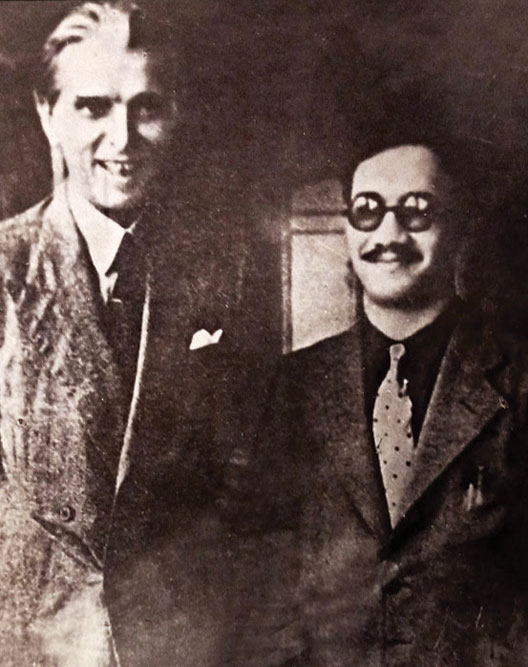
“I have throughout the last 8 or 10 years been in my humble way a staunch supporter of Pakistan and a loyal and devoted friend of the Muslim cause in India and of the Muslim League. In recent years, I took upon myself the task of doing my humble bit in securing the establishment of Pakistan by seeing to it that nothing was done on behalf of the Indian States which would seriously hamper the birth of a separate Muslim State in India… Since then, I have in my individual capacity tried to maintain and preserve the independence of Muslim States including Bhopal. In that work I have received no support from the Hindu States…
“My own personal wish is to abdicate and to serve Islam. I am a poor man not having amassed a fortune at the expense of my people, but that does not matter as long as I can serve Islam and Pakistan and help and support you if I am permitted and privileged to do so. I am prepared to serve Pakistan in any capacity. I should therefore, like to know how I should be employed by you and in what capacity. If you have no use for me, or if my presence in Pakistan and my association with you is to be of the least embarrassment to you, I should also like to know this now…”
The betrayer Nawab was betrayed, not by the British alone but, in a sucker punch, by the so-called saviour of Islam and the founder of Pakistan.
Hamidullah Khan was not the only Muslim ruler of a principality in the subcontinent who played treacherous games to aid Jinnah’s plans. The textured pages of history continue to narrate some seldom-told stories on this.
The problem for Jinnah was two-fold. His basis of support for Muslim separatism lay in Muslim-minority provinces like the United Provinces, later Uttar Pradesh, while he had little purchase in Muslim majority provinces, such as Punjab and Bengal. His strategy was two-fold. One, allow the provincial ‘big guns’ to do as they pleased in their domains while giving him a relatively free hand at the central-level negotiations with the British and—importantly—leave undefined or vague the contours of “Pakistan”. The second prong of his strategy caught almost everyone—from the poor to the ashraf elite—on the wrong foot. The poor paid the price with their lives as thousands perished. The death count, which is disputed to this day, is suspected to range between 200,000 and 2 million persons. The elite, including the Mahmudabad family among others, adopted different means to protect their properties that were spread over the subcontinent and could not be disposed of easily.
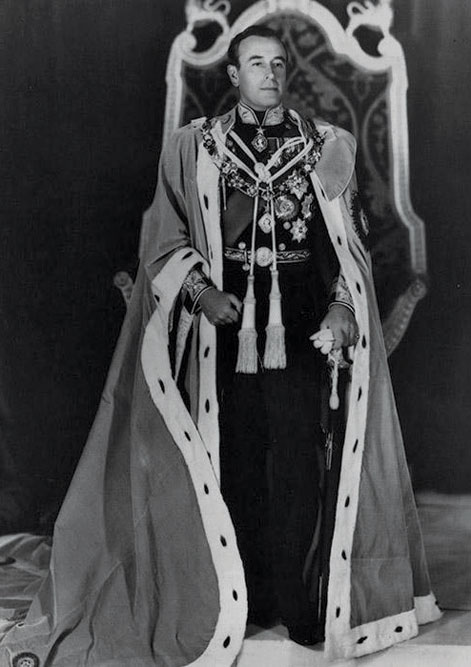
Among officials at the highest echelons of the British India Empire, Hamidullah’s friends included Lord Louis Mountbatten. His friendship was aimed at securing what he envisioned as a smooth transition to greener pastures for his family
One can sketch an arc over time, from the provincial elections in 1937 to those in 1946. In those nine years, the fate of India was sealed. In 1937, Congress won in eight of the 11 provinces of British India. Crucially, in the two—key—Muslim majority provinces, Punjab and Bengal, coalitions based on cross-cutting communal alliances came to power. The Muslim League could not form a government even in a single province. What made the political situation especially difficult for Jinnah was that parties led by provincial Muslim leaders, such as Sikandar Hayat Khan in Punjab and AK Fazlul Huq in Bengal, cramped the space for the Muslim League. In Punjab, Jinnah had to swallow a bitter pill and swore never to return to the province. Just months after the results of the 1937 elections, he had to unhappily conclude a ‘pact’ with Sikandar Hayat Khan: members of the Unionist Party in Punjab would be allowed to join the Muslim League, but in reality, Khan would continue to call the shots.
In Bengal, Fazlul Huq was nominally in a coalition with the Muslim League. But Bengal’s politics had its challenges: far from presenting a ‘united face’, the Huq ministry was marred by its factional challenges, such as those between Khwaja Nazimuddin (who succeeded Huq as prime minister of Bengal) and Huseyn Shaheed Suhrawardy (who, in turn, succeeded Nazimuddin as prime minister).
In those years, all that Jinnah could do was to watch helplessly from the sidelines as these powerful politicians called the shots, disabusing him of being the sole, pan-Indian leader of India’s Muslims.
Jinnah’s chance came in October 1939 when Congress walked out of government in the eight provinces where it held power. Jinnah gleefully described the event as a “day of deliverance”, and the Muslim League even celebrated the occasion. It was a costly strategic mistake on the part of Congress. The British officialdom, which was always prejudiced against Congress and chafed at being forced to work under Indian ministers, embraced Jinnah. The latter gave all the support the British wanted during that crucial period when men and material were being mobilised in the World War.
VP Menon, a civil servant who was to play a crucial role after Independence in the merger of Indian states, recorded the event thus: “By resigning the Congress Party showed a lamentable political wisdom. There was little chance of its being put out of office: the British Government would surely have hesitated to incur the odium of dismissing Ministries, which had the overwhelming support of the people…In any case it is clear that but for the resignation of the Congress Ministries, Jinnah and the Muslim League would have never attained the position they did.”
After that, Jinnah found matters going his way at every step. The then Viceroy Lord Linlithgow backed him at almost every turn. In 1942, Sikandar Hayat Khan died, removing the most capable Muslim notable at the provincial level who had the political acumen to check Jinnah. Khan’s successor, Khizar Hayat Tiwana, was no match for Jinnah even if he was cast in the same mould as Sikandar Hayat Khan. By 1946, when the next round of provincial elections was held, fortune smiled on the Muslim League.
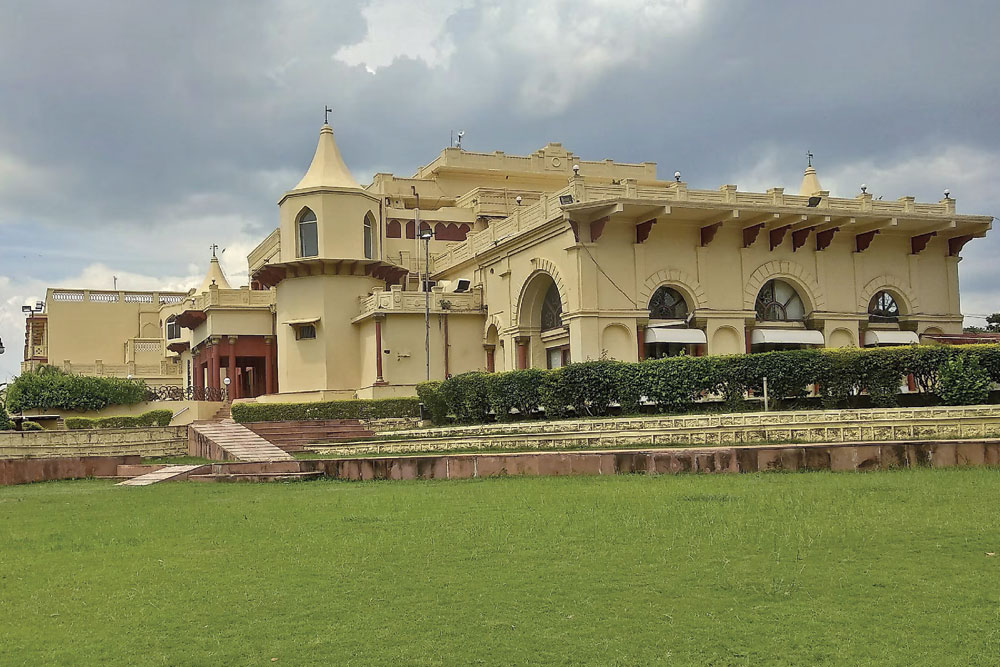
Saif’s mother, Sharmila Tagore, challenged the move to acquire properties, including the Noor-Us-Sabah Palace, which the government labelled as Enemy Property under the Enemy Property Act of 1968
By 1946, a sea change had taken place in Indian politics. In the provincial elections held in January that year, the Muslim League won most of the seats reserved for the community in the provinces, and all in the Central Assembly. These elections were fought on the issue of Pakistan. Congress, even with better organisational machinery, could not counter the Muslim League that had been nurtured and given all possible help by Lord Linlithgow and Lord Wavell, the two viceroys during this crucial period of India’s history. Crucially for Jinnah, the tide had turned in Muslim League’s favour in Punjab and Bengal, where it secured majorities. Partition of these provinces was now inevitable, and along with them, the Partition of India.
A year after 1946, India’s politics and its boundaries changed forever. The consequences of Jinnah not spelling out the boundaries of Pakistan, as he might have imagined it, were now damagingly obvious. The mass migrations that followed from both sides of the Radcliffe Line led to millions being uprooted from their homes, even as a huge number died due to violence. This did not spare elite Muslim families like the Mahmudabads. “Disappointed” by what the Partition turned out to be, the Raja of Mahmudabad chose not to live in Pakistan, at least to begin with.
One scholarly article noted: “The Raja also chose not to go to Pakistan and in August 1947 he crossed over from Quetta to Zahedan in Iran with his family on a Dakota plane, ‘broken by the experience that Partition turned out to be.’ From Iran he continued on to Karbala and settled for some time in the shrine city, which is part of Shi’ism’s most sacred geography.” (‘Local Nodes of a Transnational Network: a case study of a Shi’ite family in Awadh, 1900–1950’, Journal of the Royal Asiatic Society, July 2014, page 412).
IT IS INTERESTING to note that the author of the article did not state the dates on which the Raja of Mahmudabad chose to leave Quetta for Iran. That part of the Raja’s story was spelt by another scholar, Ishtiaq Ahmed, in an article in The Friday Times, a periodical published from Lahore in Pakistan. Ahmed, an emeritus professor of political science at the University of Stockholm, penned an article on November 25, 2023, titled ‘Why Did Raja Sahib Mahmudabad Leave Pakistan On 13 August 1947?’
The title is misleading as Pakistan did not exist on August 13, 1947, and came into being only on August 14, 1947. This digression on dates may appear pedantic. It is not: the crux of Ahmed’s argument rests on the fact that the Raja of Mahmudabad chose to leave Quetta before Pakistan came into being. The answer is revealing.
Ahmed noted that the Raja’s family was embroiled in a legal dispute over his properties in India with the Government of India under the Enemy Property Act, 1968. “The courts had on some occasions acknowledged their right to inherit Raja Sahib’s properties in India but each time the Indian government appealed against such rulings and in 2017 finally under the Enemy Property Act the claims of Raja Sahib’s family were rejected on grounds that he, the real owner, had migrated to Pakistan.”
The crux of Ahmed’s article was spelt out in another paragraph: “So, the reason Mohammad Amir Ahmad Khan, the famous Raja Sahib Mahmudabad had chosen August 13, 1947, to leave Quetta was to indicate that technically he was not in Pakistan when it came into being on August 14, 1947.”
Ahmed’s criticism, while couched in very civil terms, is devastating nonetheless. He added, “Now, Raja Sahib was not the only one to take such measures to protect his properties. In fact, many Muslim League stalwarts from North India had remained in India because they did not want to lose their property. The list is quite long…That millions of people were devastated by the Partition, losing home, hearth and family, did not prevent many Muslim League leaders from doing all to hold on to their properties.”
It is interesting to note that none of the ‘professional’ histories of the Partition mention these facts or analyse what transpired at the elite level along these lines. The answer is obvious: if that were to be done, the idea of Pakistan would appear to be less than stellar. It was, after all, mixed with the concerns of nawabzadas and sahibzadas trying to secure their properties across borders that they had helped etch in stone. These nuts and bolts of history cast a very different light on the Partition, the Enemy Property Act, 1968, and the choices of the Muslim elite who shifted their allegiances from India.
History, personal, familial, societal and political, is something like karma. Its grains are now threatening to choke the lives of the current ‘Nawab’ of Pataudi, Sajid ‘Saif’ Ali Khan and his family.

/wp-content/uploads/2025/07/Cover_Crashcause.jpg)







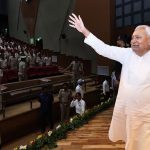





More Columns
With Too Many Odds Against Him Can Shubman Gill Keep The Series Alive? Short Post
The Learning Curve V Shoba
Bihar: On the Road to Progress Open Avenues